Mad Hedge Biotech and Healthcare Letter
March 16, 2023
Fiat Lux
Featured Trade:
(WHO’S REALLY THE BOSS?)
(ILMN), (AAPL), (TWX), (MDLZ), (CVX)

Mad Hedge Biotech and Healthcare Letter
March 16, 2023
Fiat Lux
Featured Trade:
(WHO’S REALLY THE BOSS?)
(ILMN), (AAPL), (TWX), (MDLZ), (CVX)

Carl Icahn—the legendary investor known for toppling corporate behemoths and taking charge of their destinies—has swooped in to save Illumina (ILMN) from its own misguided move.
To salvage what’s left of the promising biotechnology company, he has emerged with a plan for shareholders: halt their recent deal with Grail—a cancer-screening firm that Icahn and his faithful followers want nothing more than to see dropped. Part of his plan is to nominate three people to sit on the board of Illumina. The move sent shares of ILMN soaring – no doubt leaving Icahn feeling pretty victorious himself.
For additional background, Icahn isn’t an ordinary businessman and investor. He is the founder, chairman, and majority shareholder of Icahn Enterprises, a diversified conglomerate holding company based in New York City, formerly American Real Estate Partners. He is one of the world's most successful and influential investors, having made billions through his investments in companies such as Apple (AAPL), Time Warner Inc. (TWX), RJR Nabisco (now Mondelez (MDLZ)), and Texaco (CVX). His extensive corporate takeover activities have resulted in him being dubbed "The King of Corporate Raiders."
As an activist investor, he is an individual or a member of a group of investors who uses their financial resources to directly influence the actions and decisions of organizations, often by purchasing shares in the business.
They often demand changes to corporate structure and strategy changes, board composition, and executive compensation practices. Needless to say, activist investors have a significant impact on a company, as they typically target companies that are undervalued and push for changes that can increase their value.
This is an extremely timely announcement for Illumina since the company’s value plummeted from $70 billion in 2021 to $31 billion in 2023. However, the biotech isn’t going down without a fight.
The acquisition of Grail by Illumina was first announced in September 2020, and it has been a subject of discussion and scrutiny since then. The proposed deal involves Illumina buying out the remaining stake in Grail that it does not already own, for a total of $8 billion in cash and stock.
Illumina believes that its plan to acquire Grail is a significant development in the field of genomics and cancer diagnostics. At the moment, Illumina is a leading provider of genomics technology, while Grail is a biotechnology company focused on developing a blood test for early cancer detection.
The acquisition is expected to create significant synergies between the two companies. Illumina's expertise in genomic sequencing technology combined with Grail's cutting-edge liquid biopsy technology could potentially lead to the development of a powerful and efficient cancer detection tool.
The acquisition has, however, faced some challenges, including regulatory hurdles. The Federal Trade Commission (FTC) expressed concerns that the acquisition could lead to Illumina having a monopoly in the market for sequencing machines, which are used in Grail's liquid biopsy tests. As a result, the FTC filed a lawsuit to block the acquisition.
Despite the challenges, Illumina and Grail remain committed to the deal, and in December 2021, they announced that they had reached a settlement with the FTC. The settlement requires Illumina to sell its existing liquid biopsy technology to a third party and abide by certain conditions to prevent any potential anti-competitive effects of the acquisition.
All things considered, it is undeniable that the acquisition of Grail by Illumina has the potential to revolutionize cancer diagnostics and improve patient outcomes. However, the regulatory hurdles demonstrate the importance of ensuring mergers and acquisitions do not harm competition and ultimately negatively impact consumers.
Overall, Illumina is a promising biotech with much room to grow. It pioneered the development of next-generation sequencing (NGS) technology, which revolutionized the field of genomics. NGS allows researchers to sequence large amounts of DNA quickly and at a lower cost than traditional Sanger sequencing methods.
NGS works by breaking the DNA into small fragments and sequencing them simultaneously. These short reads of DNA are then assembled to create a whole genome. Illumina's NGS technology is based on a proprietary sequencing-by-synthesis method, which uses flourescently labeled nucleotides to detect and record the sequence of DNA bases as they are incorporated into a growing DNA chain.
NGS has many applications in genomics research, including identifying genetic mutations, studying gene expression patterns, and characterizing the microbiome. The technology has also played a critical role in advancing precision medicine and personalized healthcare.
Illumina's pioneering work in NGS has allowed the company to establish a dominant market position in the genomics industry and has driven significant innovation in the field of genomics.
Thanks to this biotech’s products, the cost of a complete human genome analysis dropped from the hundreds of millions range in 2001 to less than $1000 today. More notably, the company projects the price to go lower and be below $200 when it releases its new services.
Being hailed as a market leader is a well-deserved description for the company. After all, Illumina quadrupled its revenues in the past 10 years and continues to deliver decent results.
Icahn’s move to take on Illumina offers a fresh and seemingly more promising perspective regarding the company’s direction. He believes Illumina can unlock value by spinning off non-core businesses, returning cash to shareholders, reducing costs, and improving operational efficiency. However, Illumina's management resisted Icahn's calls for a sale and instead focused on investing in research and development to drive growth.
Still, Icahn's targeting of Illumina is likely driven by his belief that the company is undervalued and not maximizing shareholder value. While it will take time before anything gets resolved, what’s apparent is that Illumina doesn’t hold complete freedom when it comes to decision-making, which would inevitably hurt its future success.
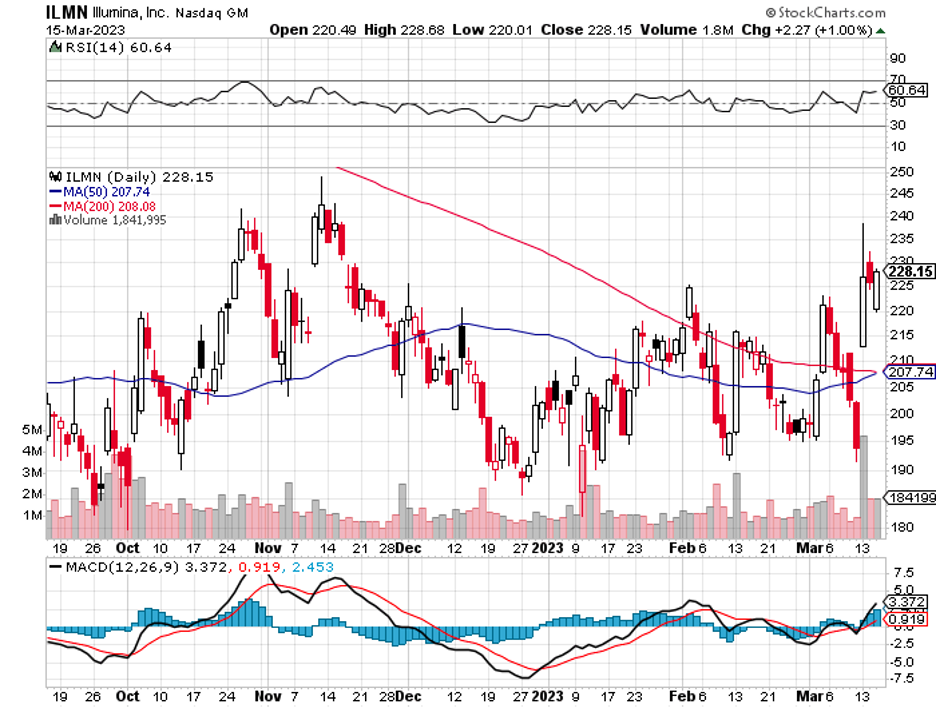
Global Market Comments
April 3, 2019
Fiat Lux
Featured Trade:
(WHO WILL BE THE NEXT FANG?)
(FB), (AMZN), (NFLX), (GOOGL), (AAPL),
(BABA), (TSLA), (WMT), (MSFT),
(IBM), (VZ), (T), (CMCSA), (TWX)
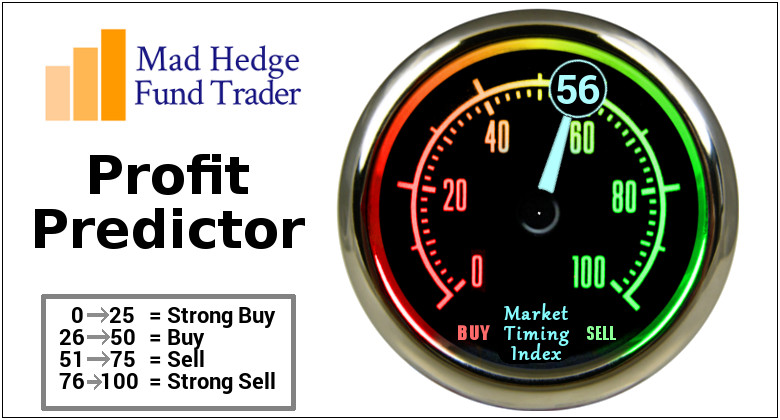
FANGS, FANGS, FANGS! Can’t live with them but can’t live without them either.
I know you’re all dying to get into the next FANG on the ground floor, for to do so means capturing a potential 100-fold return, or more.
I know because I’ve done it four times. The split adjusted average cost of my Apple shares is only 25 cents compared to today’s $174, so you can understand my keen interest. My average on Tesla is $16.50.
Uncover a new FANG and the riches will accrue rapidly. Facebook (FB), Amazon AMZN), Netflix (NFLX), and Alphabet (GOOGL) didn’t exist 25 years ago. Apple (AAPL) is relatively long in the tooth at 40 years. And now all four are in a race to become the world’s first trillion-dollar company.
One thing is certain. The path to FANGdom is shortening. It took Apple four decades to get where it is today, Facebook did it in one. As Steve Jobs used to tell me when he was running both Apple and Pixar, “These overnight successes can take a long time.”
There is also no assurance that once a FANG always a FANG. In my lifetime, I have seen far too many Dow Average components once considered unassailable crash and burn, like Eastman Kodak (KODK), General Electric (GE), General Motors (GM), Sears (SHLD), Bethlehem Steel, and IBM (IBM).
I established in an earlier piece that there are eight essential attributes of a FANG, product differentiation, visionary capital, global reach, likeability, vertical integration, artificial intelligence, accelerant, and geography.
We are really in a “What have you done for me lately” world. That goes for me too. All that said, I shall run through a short list for you of the future FANG candidates we know about today.
Alibaba (BABA)
Alibaba is an amalgamation of the Chinese equivalents of Amazon, PayPal, and Google all sewn together. It accounts for a staggering 63% of all Chinese online commerce and is still growing like crazy. Some 54% of all packages shipped in China originate from Alibaba.
The juggernaut has over half billion active users, and another half billion placing orders through mobile phones. It is a master of AI and B2B commerce. There is nothing else like it in the world.
However, it does have some obvious shortcomings. Its brand is almost unknown in the US. It has a huge problem with fakes sold through their sites.
It also has an ownership structure for foreign investors that is byzantine, to say the least. It is a contractual right to a share of profits funneled through a PO box in the Cayman Island. The SEC is interested, to say the least.
We also don’t know to what extent founder Jack Ma has sold his soul to the Beijing government. It’s probably a lot. That could be a problem if souring trade relations between the US and the Middle Kingdom get worse, a certainty with the current administration.
Tesla (TSLA)
Before you bet on a new startup breaking into the Detroit Big Three, go watch the movie “Tucker” first. Spoiler Alert: It ends in tears.
Still, Tesla (TSLA) has just passed the 270,000 mark in the number of cars manufacturered. Tucker only got to 50.
Having led my readers into the stock after the IPO at $16.50, I am already pretty happy with this company. Owning three of their cars helps too (two totaled). But Tesla still has a long way to go.
It all boils down to the success of the $35,000, 200-mile range Tesla 3 for which it already has 500,000 orders. So far so good.
It’s all about scale. If it can produce these cars in sufficient numbers, it will take over the world and easily become the next FANG. If it can’t, it won’t. It’s that simple.
To say that a lot is already built into the share price would be an understatement. Tesla now trades at ten times revenues compared to 0.5 for Ford (F) and (General Motors (GM). That’s a relative overvaluation of 20:1.
Any of a dozen competing electric car models could scale up with a discount model before they do, such as the similarly priced GM Bolt. But with a ten-year lead in the technology, I doubt it.
It isn’t just cars that will anoint Tesla with FANG sainthood. The firm already has a major presence in rooftop solar cell installation through Solar City, utility sized solar plants, industrial scale battery plants, and is just entering commercial trucks. Consider these all seeds for FANGdom.
One thing is certain. Without Tesla, there wouldn’t be s single mass-market electric car on the road today.
For that, we can already say thanks.
Uber
In the blink of an eye, ride sharing service Uber has become essential for globe-trotting travelers such as myself.
Its 2 million drivers completely disrupted the traditional taxi model for local transportation which remains unchanged since the days of horses and buggies.
That has created the first $75 billion of enterprise value. It’s what’s next that could make the company so interesting.
It is taking the lead in autonomous driving. It could also replace FeDex, UPS, DHL, and the US post office by offering same day deliveries at a fraction of the overnight cost.
It is already doing this now with Uber Foods which offers immediate delivery of takeouts (click here if you want lunch by the time you finish reading this piece.)
UberCopters anyone? Yes, it’s already being offered in France and Brazil.
Uber has the potential to be so much more if it can just outlive its initial growing pains.
It is a classic case of the founder being a terrible manager, as Travis Kalanick has lurched from one controversy to the next. The board finally decided he should spend much time on his new custom built 350-foot boat.
Its “bro” culture is notorious, even in Silicon Valley.
It is also getting enormous pushback from regulators everywhere protecting entrenched local interests. It has lost its license in London, the only place in the world that offered a decent taxi service pre-Uber. Its drivers are getting beaten up in Paris.
However, if it takes advantage of only a few of the doors open to it, status as a FANG beckons.
Walmart (WMT)
A few years ago, I was heavily criticized for pointing out that half the employees at my local Walmart (WMT) were missing their front teeth. They have since received a $2 an hour's pay raise, but the teeth are still missing. They don’t earn enough money to get them fixed.
The company is the epitome of bricks and mortar in a digital world with 12,000 stores in 28 countries. It is the largest private employer in the US, with 1.4 million workers, mostly earning minimum wage.
The Walmart customer is the very definition of the term “late adopter.” Many are there only because unlike Amazon, Wal-Mart accepts cash and Food Stamps.
Still, if Walmart can, in any way, crack the online nut, it would be a turbocharger for growth. It moved in this direction with the acquisition of Jet.com for $3 billion, a cutting-edge e-commerce firm based in Hoboken, NJ.
However, this remains a work in progress. Online sales account for only 4% of Walmart’s total. But they could only be a few good hires at the top away from success.
Microsoft (MSFT)
Talk about going from being the 800-pound gorilla to an 80 pound one, and then back to 800 pounds.
I don’t know why Microsoft (MSFT) lost its way for 15 years, but it did. Blame Bill Gates’s retirement from active management and his replacement by his co-founder Steve Ballmer.
Since Ballmer’s departure in 2014, the performance of the share price has been meteoric, rising by some 125% over the past two years.
You can thank the new CEO Satya Nadella who brought new vitality to the job and has done a complete 180, taking Microsoft belatedly into the cloud.
Microsoft was never one to take lightly. Windows still powers 90% of the world’s PCs. No company can function without its Office suite of applications (Word, Excel, and PowerPoint). SQL Server and Visual Studio are everywhere.
That’s all great if you want to be a public utility, which Microsoft shareholders don’t.
LinkedIn, the social media platform for professionals, could be monetized to a far greater degree. However, specialization does come at the cost of scalability.
It seems that the future is for Microsoft to go head to head against next door neighbor Amazon (AMZN) for the cloud services market while simultaneously duking it out with Alphabet (GOOGL).
My bet is that all three win.
Airbnb
This is another new app that has immeasurably changed my life for the better. Instead of cramming myself into a hotel suite with a wildly overpriced minibar for $600 a night, I get a whole house for $300 anywhere in the world, with a new local best friend along with it.
Overnight, Airbnb has become the world’s largest hotel chain without actually owning a single hotel. At its latest funding round in 2017, it was valued at $31 billion.
The really tricky part here is for the firm to balance out supply and demand in every city in the world at the same time. It is also not a model that lends itself to vertical integration. But who knows? Maybe priority deals with established hotels are to come.
This is another firm that is battling local regulation, that great barrier to technological innovation. None other than its home town of San Francisco now has strict licensing requirements for renters, a 30 day annual limitation, and a $1,000 a day fine for offenders.
The downtowns of many tourist meccas like Florence, Italy and Paris, France have been completely taken over by Airbnb customers, driving rents up and locals out.
IBM (IBM)
There was a time in my life when IBM was so omnipresent we thought like the Great Pyramids of Egypt it would be there forever. How times change. Even Oracle of Omaha Warren Buffet became so discouraged that he recently dumped the last of his entire five-decade long position.
A recent 20 consecutive quarters of declining profits certainly hasn’t helped Big Blue’s case. It is one of the only big technology companies whose share price has gone virtually nowhere for the past two years.
IBM’s problem is that it stuck with hardware for too long. An entrenched bureaucracy delayed its entry into services and the cloud, the highest growth areas of technology.
Still, with some $80 billion in annual revenues, IBM is not to be dismissed. Its brand value is still immense. It still maintains a market capitalization of $144 billion.
And it has a new toy, Watson, the supercomputer named after the company’s founder, which has great promise, but until now has remained largely an advertising ploy.
If IBM can reinvent itself and get back into the game, it has FANG potential. But for the time being, investors are unimpressed and sitting on their hands.
The Big Telecom Companies
My final entrant in the FANGstakes would be any combination of the four top telecommunication companies, Verizon (VZ), AT&T (T), Comcast (CMCSA), and Time Warner (TWX), which now control a near monopoly in the US.
There is a reason why the administration is blocking the AT&T/Time Warner merger, and it is not because these companies are consistently cited in polls as the most despised in America. They are trying to stop the creation of another hostile FANG.
Still, if any of the big four can somehow get together, the consequences would be enormous. Ownership of the pipes through which the modern economy courses bestows great power on these firms.
And Then….
There is one more FANG possibility that I haven’t mentioned. Somewhere, someplace, there is a pimple-faced kid in a dorm room thinking up a brand-new technology or business model that will take the world by storm and create the next FANG.
Call me crazy, but I have been watching this happen for my entire life.
I want to thank my friend, Scott Galloway, of New York University’s Stern School of Business, for some of the concepts in this piece. His book, “The Four” is a must read for the serious tech investor.
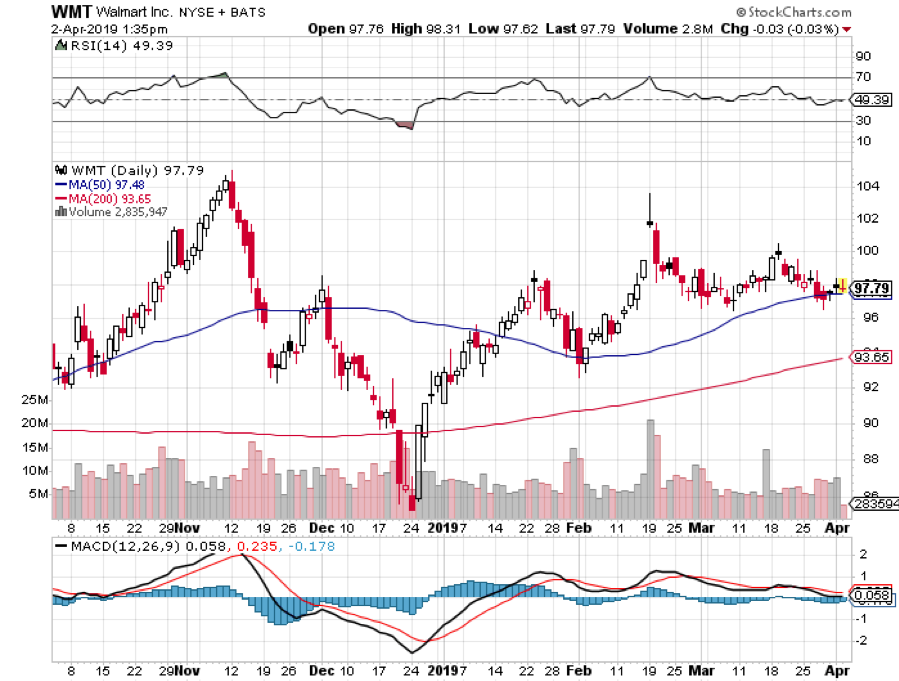

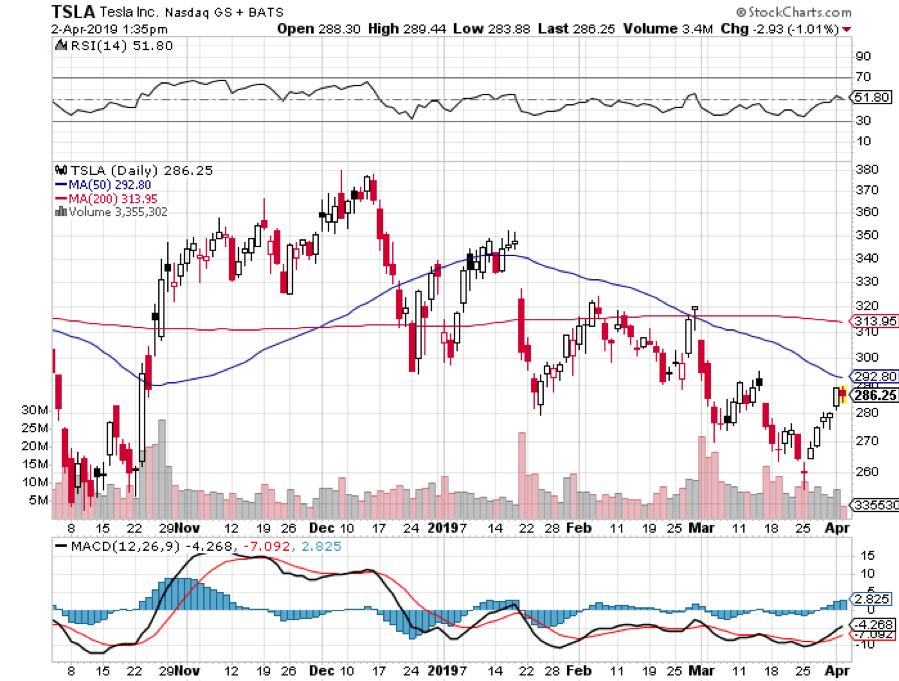
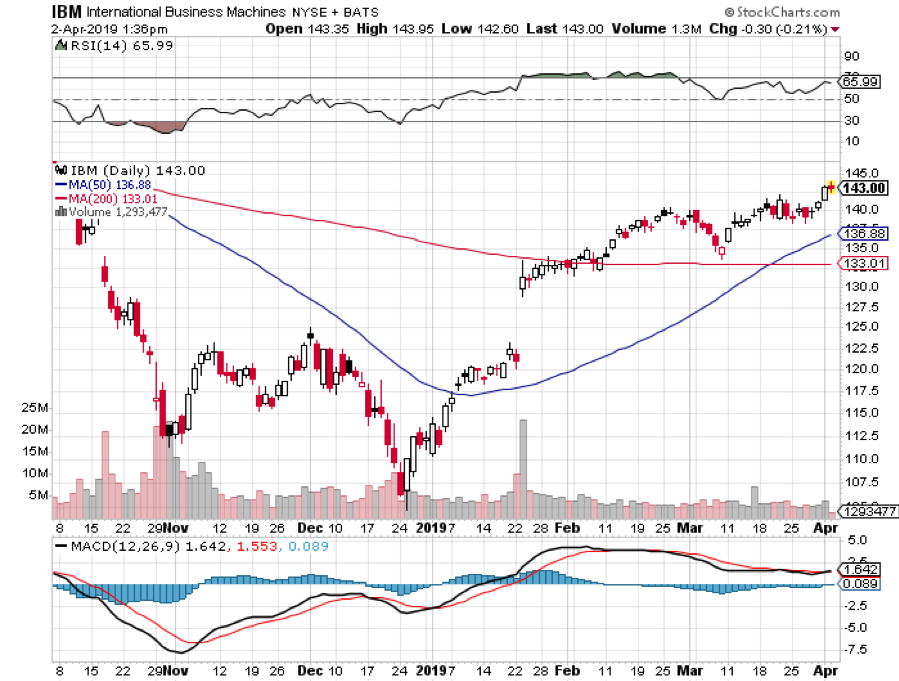

Creating the Next FANG?
Mad Hedge Technology Letter
June 21, 2018
Fiat Lux
Featured Trade:
(WHY NETFLIX IS UNSTOPPABLE),
(NFLX), (CAT), (AMZN), (CMCSA), (DIS), (FOX), (TWX), (GM), (WMT), (TGT)

Trade war? What trade war?
Apparently, nobody told Netflix (NFLX) that we are smack dab in a tit-for-tat trade war between two of the greatest economic powers to grace mankind.
No matter rain or shine, Netflix keeps powering on to new highs.
The Mad Hedge Technology Letter first recommended this stock on April 23, 2018, when I published the story "How Netflix Can Double Again," (click here for the link) and at that time, shares were hovering at $334.
Since, then it's off to the races, clocking in at more than $413 as of today, a sweet 19% uptick since my recommendation.
It seems the harder I try, the luckier I get.
What separates the fool's gold from the real yellow bullion are challenging market days like yesterday.
The administration announced a new set of tariffs on $200 billion worth of Chinese imports.
The day began early on the Shanghai exchange dropping a cringeworthy 3.8%.
The Hong Kong Hang Seng Market didn't fare much better cratering 2.78%.
Investors were waiting for the sky to drop when the minutes counted down to the open in New York and futures were down big premarket.
Just as expected, the Dow Jones Index plummeted on the open, and in a flash the Dow was down 410 points intraday.
The risk off appetite toyed with traders' nerves and American companies with substantial China exposure being rocked the hardest such as Caterpillar (CAT).
After the Dow hit an intraday low, a funny thing happened.
The truth revealed itself and U.S. equities reacted in a way that epitomizes the nine-year bull market.
Tar and feather a stock as much as you want and if the stock keeps going up, it's a keeper.
Not only a keeper, but an undisputable bullish signal to keep you from developing sleep apnea.
In the eye of the storm, Netflix closed the day up a breathtaking 3.73%. The overspill of momentum continued with Netflix up another 2% and change today.
This company is the stuff of legends and reasons to buy them are legion.
As subscriber surveys flow onto analysts' desks, Netflix is the recipient of a cascade of upgrades from sell side analysts scurrying to raise targets.
Analysts cannot raise their targets fast enough as Netflix's price action goes from strength to hyper-strength.
Chip stocks have the opposite problem when surveys, portraying an inaccurate picture of the 30,000-foot view, prod analysts to downgrade the whole sector.
That is why they are analysts, and most financial analysts these days are sacked in the morning because they don't understand the big picture.
Quality always trumps quantity. Period.
Netflix has stockpiled consecutive premium shows from titles such as Stranger Things, The Crown, Unbreakable Kimmy Schmidt, and Orange is the New Black.
This is in line with Netflix's policy to spend more on non-sports content than any other competitors in the online streaming space.
In 2017, Netflix ponied up $6.3 billion for content and followed that up in 2018, with a budget of $8 billion to produce original in-house shows.
Netflix hopes to increase the share of original content to 50%, decoupling its reliance on traditional media stalwarts who hate Netflix's guts with a passion.
A good portion of this generous budget will be deployed to make 30 new anime shows and 80 new original films all debuting by the end of 2018.
Amazon's (AMZN) Manchester by the Sea harvested two Oscars for its screenplay and Casey Affleck's performance, foreshadowing the opportunity for Netflix to win awards next time around, potentially boosting its industry profile.
It will only be a matter of time because of the high quality of production.
Netflix's content budget will dwarf traditional media companies by 2019, creating more breathing room against the competitors who have been late to the party and scrambling for scraps.
This is what Disney's futile attempts to take on Netflix, which raised its offer for Fox to $71.3 billion to galvanize its content business.
Disney's (DIS) bid came on the heels of Comcast Corp. (CMCSA) bid for Disney at $65 billion.
The sellers' market has boosted all content assets across the board.
Remember, content is king in this day and age.
In 2017, Time Warner (TWX) and Fox (FOX) spent $8 billion each and Disney slightly lagged with a $7.8 billion spend on non-sports programming.
Netflix will certainly announce a sweetened content outlay of somewhere close to $9.5 billion next year attracting the best and brightest to don the studios of Netflix.
What's the whole point of creating the best content?
It lures in the most eyeballs.
Subscriber growth has been nothing short of spectacular.
Expectations were elevated, and Netflix delivered in spades last quarter adding quarterly total subscribers to the tune of 7.41 million versus the 6.5 million expected by analysts.
Not only a beat, but a blowout of epic proportions.
Inside the numbers, rumors were adrift of Netflix's domestic numbers stagnating.
Consensus was proved wrong again, with domestic subscribers surging to 1.96 million versus the 1.48 million expected.
The cycle replays itself over. Lather, rinse, repeat.
Quality content attracts a wave of new subscribers. Robust subscriber growth fuels more spending, which paves the way for more quality content.
This is Netflix's secret formula to success.
Netflix has executed this strategy systemically to the aghast of traditional media companies that are stuck with legacy businesses dragging them down and making it decisively difficult to compete with the nimble online streaming players.
Turning around a legacy business is tough work because investors expect profits and curse the ends of the earth if companies spend big on new projects removing the prospects of dividend hikes.
Netflix and the tech darlings usually don't make a profit but have a license to spend, spend, and spend some more because investors are on board with a specific narrative prioritizing market share and posting rapid growth.
The cherry on top is the booming secular story happening as we speak in Silicon Valley.
Effectively, all other sectors that are not tech have become legacy sectors thanks in large part to the high degree of innovation and cross-functionality of big cap tech companies.
The future legacy winners are the legacy stocks and sectors reinventing themselves as new tech players such as General Motors (GM), Walmart (WMT), and Target (TGT).
The rest will die a miserably and excruciatingly slow death.
The Game of Thrones M&A battle with the traditional media companies is a cry of desperate search for these dinosaurs.
They were too late to react to the Netflix threat and were punished to full effect.
Halcyon days are upon Netflix, and this company controls its own destiny in the streaming wars and online streaming content industry.
As history shows, nobody executes better than CEO Reed Hastings at Netflix, which is why Netflix maintains its grade as a top 3 stock in the eyes of the Mad Hedge Technology Letter.



_________________________________________________________________________________________________
Quote of the Day
"I got the idea for Netflix after my company was acquired. I had a big late fee for Apollo 13. It was six weeks late and I owed the video store $40. I had misplaced the cassette. It was all my fault," - said cofounder and CEO of Netflix Reed Hastings.

Legal Disclaimer
There is a very high degree of risk involved in trading. Past results are not indicative of future returns. MadHedgeFundTrader.com and all individuals affiliated with this site assume no responsibilities for your trading and investment results. The indicators, strategies, columns, articles and all other features are for educational purposes only and should not be construed as investment advice. Information for futures trading observations are obtained from sources believed to be reliable, but we do not warrant its completeness or accuracy, or warrant any results from the use of the information. Your use of the trading observations is entirely at your own risk and it is your sole responsibility to evaluate the accuracy, completeness and usefulness of the information. You must assess the risk of any trade with your broker and make your own independent decisions regarding any securities mentioned herein. Affiliates of MadHedgeFundTrader.com may have a position or effect transactions in the securities described herein (or options thereon) and/or otherwise employ trading strategies that may be consistent or inconsistent with the provided strategies.
This site uses cookies. By continuing to browse the site, you are agreeing to our use of cookies.
OKLearn moreWe may request cookies to be set on your device. We use cookies to let us know when you visit our websites, how you interact with us, to enrich your user experience, and to customize your relationship with our website.
Click on the different category headings to find out more. You can also change some of your preferences. Note that blocking some types of cookies may impact your experience on our websites and the services we are able to offer.
These cookies are strictly necessary to provide you with services available through our website and to use some of its features.
Because these cookies are strictly necessary to deliver the website, refuseing them will have impact how our site functions. You always can block or delete cookies by changing your browser settings and force blocking all cookies on this website. But this will always prompt you to accept/refuse cookies when revisiting our site.
We fully respect if you want to refuse cookies but to avoid asking you again and again kindly allow us to store a cookie for that. You are free to opt out any time or opt in for other cookies to get a better experience. If you refuse cookies we will remove all set cookies in our domain.
We provide you with a list of stored cookies on your computer in our domain so you can check what we stored. Due to security reasons we are not able to show or modify cookies from other domains. You can check these in your browser security settings.
These cookies collect information that is used either in aggregate form to help us understand how our website is being used or how effective our marketing campaigns are, or to help us customize our website and application for you in order to enhance your experience.
If you do not want that we track your visist to our site you can disable tracking in your browser here:
We also use different external services like Google Webfonts, Google Maps, and external Video providers. Since these providers may collect personal data like your IP address we allow you to block them here. Please be aware that this might heavily reduce the functionality and appearance of our site. Changes will take effect once you reload the page.
Google Webfont Settings:
Google Map Settings:
Vimeo and Youtube video embeds:
